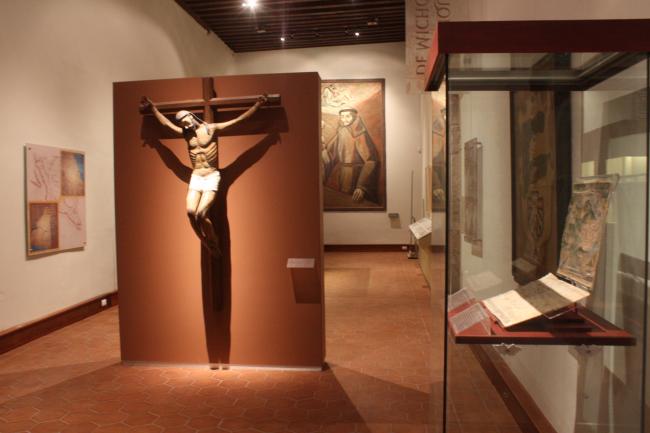
Worldview and Conquest
Sala
This section explores the rupture in Tarascan history, beginning with their worldview and prophetic omens foretelling the end of their world. It continues with the Spanish conquest and the establishment of a new territorial order, including the founding of towns and cities and the key role of evangelization—essential to understanding how Michoacán was colonized.
The landscape of the Lake Pátzcuaro basin, encircled by volcanoes and prone to frequent seismic activity, shaped the lives of the Tarascan people. Their principal deities were deeply connected to nature: the sun, moon, mountains, sea, and lakes. The arrival of Spanish forces in 1522 triggered a cascade of historical, political, and cultural changes that transformed the region forever.
The "Relación de Michoacán" recounts the omens that preceded the Spaniards’ arrival: prophetic dreams, meteor showers, earthquakes, and the cracking of temples—warnings from the gods that “all will be left deserted, for other men are coming to this land…”
And the omens came true. Spanish soldiers occupied Tarascan territory, destroyed sacred objects and sites, plundered treasures, and subdued the population. The land and its resources were parceled out among the Spanish as encomiendas. Soon after came the first missionaries and settlers, whose impact was equally profound: Indigenous people were resettled into new towns, small agricultural and livestock ventures were established, and mineral exploration began—forever altering the province’s landscape.
The arrival of the Spanish in the Americas, and particularly in Michoacán, was a violent collision of two distinct cultural universes. The execution of the last Tarascan cazonci, Tzitzincha Tangaxoan, at the hands of Spanish captain Nuño de Guzmán, marks the scale of that upheaval—a clash that would ultimately give birth to a new world: New Spain.


